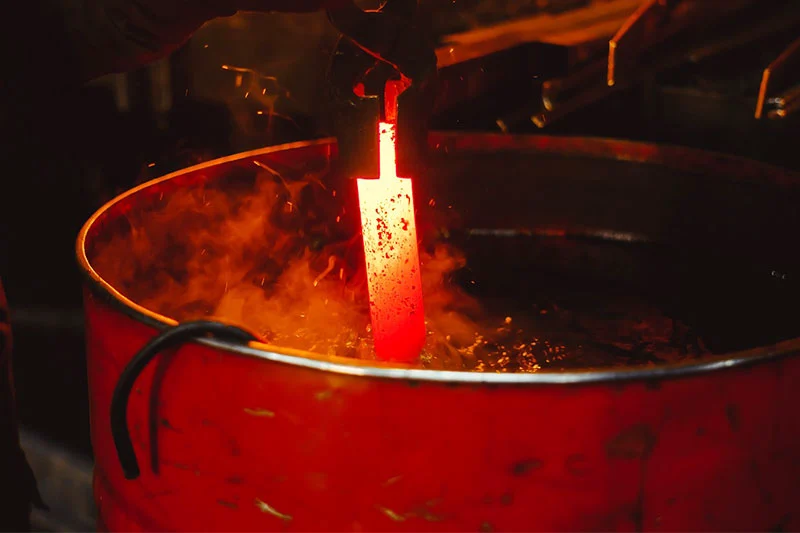What is Quenching?
- By: Brother Furnace
- 2024-07-01 23:29
Quenching is a metal heat treatment process that increases hardness and strength by rapidly cooling metal materials. This process is commonly used with steels and other iron-based alloys to form a hard structure known as martensite. Quenching typically involves heating the metal to a specific temperature and then rapidly cooling it, often using water, oil, or air as the cooling medium.

Purpose of Quenching
The purpose of quenching is to change the physical and mechanical properties of metal materials through rapid cooling. The main objectives include:
1. Increasing hardness and strength: Quenching can increase the hardness and strength of the metal, making it more wear-resistant and durable.
2. Enhancing wear resistance: The surface of quenched metal becomes harder, which helps it resist wear better.
3. Improving fatigue strength: Quenched metal can better withstand cyclic stress, thereby extending its service life.
4. Refining the grain structure: Quenching can refine the grain structure within the metal, improving its overall mechanical properties.
However, quenching may also increase the metal's brittleness, so subsequent tempering is often required to balance hardness and toughness.
Quenching Process in Vacuum Furnaces
Avacuum furnaceis a heat treatment device used in a vacuum environment, suitable for high precision and quality quenching processes. The quenching process in a vacuum furnace includes several steps:
Preparation: Metal materials are typically cleaned and preheated before quenching to ensure uniform heating and cooling.
Heating: Metals are placed into the vacuum furnace and heated to the quenching temperature. The vacuum environment prevents oxidation and decarburization, enhancing the quenching quality.
Soaking: After reaching the target temperature, metals are held for a certain duration to ensure uniform internal structure changes.
Rapid Cooling: Metals are rapidly cooled by introducing a cooling gas (such as helium or nitrogen). The cooling rate in a vacuum furnace is controllable, allowing precise control of the cooling curve to achieve desired metallurgical properties.
Brother Furnace's Vacuum Quenching Furnaces
Brother Furnace is a leading manufacturer of industrial furnaces, renowned for high-quality and high-performance vacuum quenching furnaces. They offer two types:
 |  |
Maximum Temperature: 1350°C Application: Widely used for processing high-alloy steels, precision alloys, and stainless steels, particularly for applications requiring stringent control to avoid surface contamination and oxidation. | Maximum Temperature: 1600°C Application: Mainly used for processing steels and their alloys, especially for applications requiring high hardness and wear resistance. |
Summary
Quenching is a crucial metal heat treatment process for enhancing hardness and strength. Using vacuum furnaces for quenching not only improves quenching quality but also reduces environmental pollution. Brother Furnace's vacuum quenching furnaces, with their high efficiency, precise control, and eco-friendly design, are industry-leading equipment providing reliable solutions for various industrial applications. Feel free tocontact us for the best pricing!




